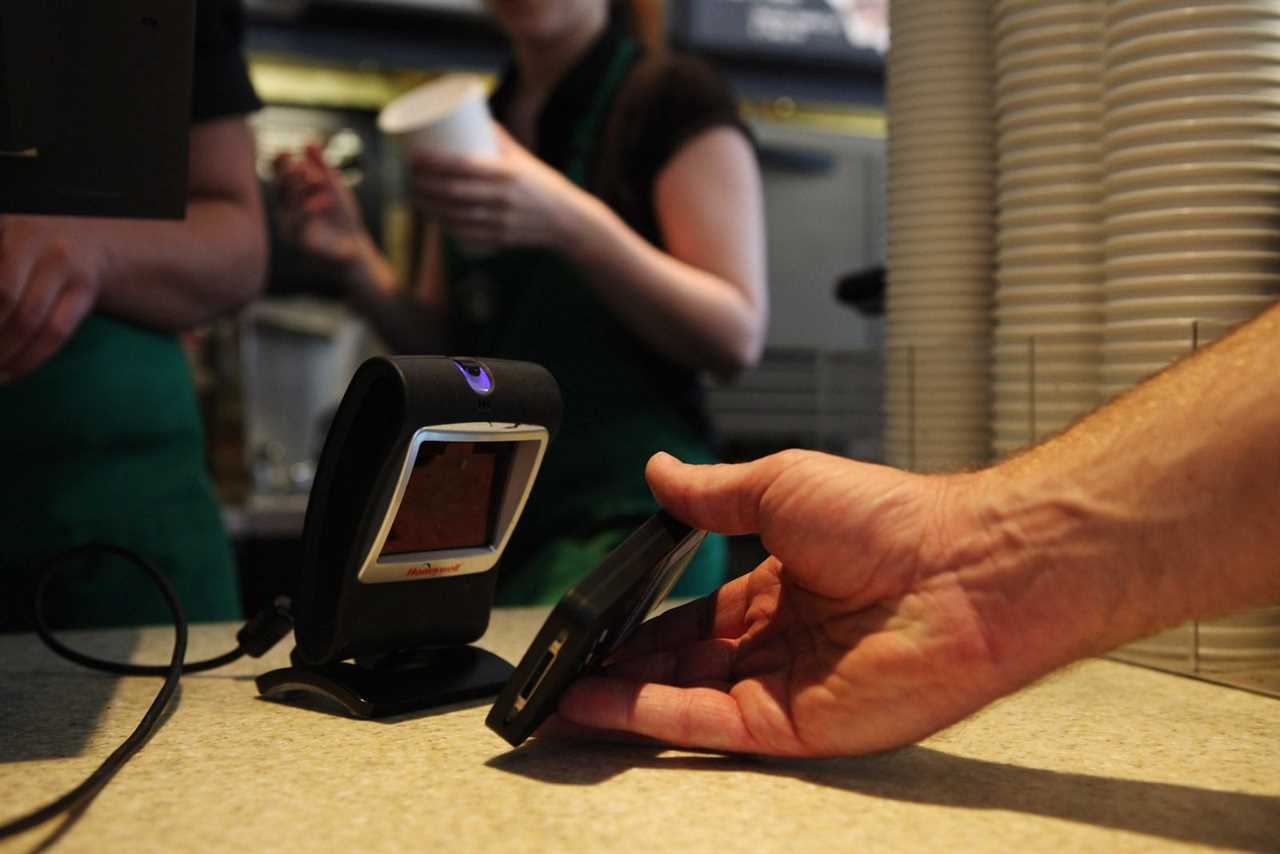HOSTED BY: 1 AIR TRAVEL
Editor’s note: This is a recurring post, regularly updated with new information.
There are many different types of rewards cards. As such, it can be confusing to sort through all the available cards and determine which card (or cards) is best for you. Once you have multiple credit cards, it can be even more difficult to remember which one to use for each transaction, so you can maximize your points and miles earning on everything you buy.
Today, we’ll look at common bonus categories where you may be making purchases and highlight cards with strong earnings in these categories.
However, in today’s post, I’ll only discuss consumer rewards cards. So, if you’d prefer a cash back rewards card or business card, you’ll want to check out our posts on the best cash back cards for each bonus category and the best business cards for each bonus category.
Get the latest points, miles and credit cards news by signing up for TPG’s free daily newsletter.
In This Post
What is a bonus category for credit cards?
A bonus category is when you earn extra points or miles on certain types of purchases with your card, such as at supermarkets. Which bonus categories your card has can vary greatly. The opposite of a bonus category is “everyday spending,” which is what you earn when using your credit card outside the bonus categories.
Best cards for airfare
(Photo by Zach Griff/The Points Guy)
While several cards compete for a place among the best cards for travel and could be used to pay for flights, some credit cards provide a higher earning rate on select airfare purchases. So, here’s a quick look at the best cards for airfare purchases.
Comparison of the top cards for airfare
CardAirfare category bonusValue of the points*Total earned per dollar spentAnnual feeThe Platinum Card® from American Express5 points per dollar on flights booked directly with the airline or via Amex Travel (up to $500,000 of these purchases per year, then 1 point per dollar).2 cents.10 cents.$695 (see rates and fees).Chase Sapphire Reserve5 points per dollar if booked with Chase Travel (otherwise 3 points per dollar).2 cents.10 cents (or 6 cents).$550.Chase Sapphire Preferred Card5 points per dollar if booked with Chase Travel (otherwise 2 points per dollar).2 cents.10 cents (or 4 cents).$95.Capital One Venture X Rewards Credit Card5 miles per dollar if booked with Capital One Travel (otherwise 2 points per dollar).1.85 cents.9.25 cents (or 3.7 cents).$395.
Citi Prestige® Card5 points per dollar.1.8 cents.9 cents.$495.American Express® Green Card3 points per dollar.2 cents.6 cents.$150 (see rates and fees).Capital One Venture Rewards Credit Card2 miles per dollar.1.85 cents.3.7 cents.$95.
*Based on TPG valuations and not provided by issuers. See more information here.
The information for the Citi Prestige and Amex Green has been collected independently by The Points Guy. The card details on this page have not been reviewed or provided by the card issuer.
Related: Maximize your airfare: The best credit cards for booking flights.
Best cards for Amazon and online shopping

(Photo by JGI/Tom Grill/Getty Images)
Online shopping is continuing to gain steam and it’s likely that you’re making purchases from Amazon and other stores this year. Here are the best cards to use for these purchases.
Comparison of the top cards for online shopping
CardShopping category bonusValue of the points*Total earned per dollar spentAnnual feeCapital One Venture Rewards Credit Card2 miles.1.85 cents.3.7 cents.$95.Capital One Venture X Rewards Credit Card2 miles.1.85 cents.3.7 cents.$395.Citi® Double Cash Card1 point when you spend and 1 point when paying the bill.1.8 cents.3.6 cents.$0.*Based on TPG valuations and not provided by issuers. See more information here.
Why the Double Cash card is the best card for online shopping
It’s true that the Venture and Venture X cards do earn more valuable rewards. However, the Double Cash card has no annual fee, and that’s why it is our top pick in this category.
You would need to spend $95,000 per year on the Venture card to earn enough rewards to compensate for the higher annual fee on this card when compared to the Double Cash card. That number jumps to $395,000 in spending on the Venture X card to earn sufficient rewards to outweigh the difference in annual fees.
The Double Cash card earns Citi ThankYou Rewards points as follows: 1 point per dollar on all purchases and another 1 point per dollar on payments made against your balance. Thus, you essentially earn 2 points per dollar, and TPG values these points at 1.8 cents apiece. This provides a solid 3.6 cents in return per dollar spent on a card with no annual fee. It also opens the door to Capital One’s growing list of transfer partners.
Related: Transfer your Citi Double Cash Card rewards to ThankYou Points
It’s also possible to maximize your rewards when shopping online by purchasing gift cards for that store at a supermarket or office supply store to earn bonus points in those categories, then using the gift cards to pay for your online purchases. See more about those categories below.
Best cards for cell phone bills

(Photo by: TIROT/BSIP/Universal Images Group via Getty Images)
Paying your cell phone bill with a credit card that offers cell phone insurance is the best way to invoke this coverage. Using a card that offers this protection should factor into your decision.
Comparison of the top cards for cell phone bills
CardCell phone bill category bonusValue of the points*Total earned per dollar spentAnnual feeCapital One Venture X Rewards Credit Card2 points per dollar.1.85 cents.3.7 cents.$395.The Platinum Card® from American Express1 point per dollar.2 cents.2 cents.$695 (see rates and fees).Citi Prestige® Card1 point per dollar.1.8 cents.1.8 cents.$495.Delta SkyMiles® Platinum American Express Card1 mile per dollar.1.41 cents.1.41 cents.$250 (see rates and fees).Delta SkyMiles® Reserve American Express Card1 mile per dollar.1.41 cents.1.41 cents.$550 (see rates and fees).*Based on TPG valuations and not provided by issuers. See more information here.
The information for the Citi Prestige has been collected independently by The Points Guy. The card details on this page have not been reviewed or provided by the card issuer.
Why the Venture X is the best card for cell phone bills
The Venture X card provides numerous perks to cardholders, including cell phone insurance. If you pay your cell phone bill with the Venture X, you’ll get up to $800 in coverage per claim with a maximum of two claims and $1,600 per 12-month period. There is a $50 deductible per occurrence.
You’ll also earn 2 Capital One miles per dollar when paying your cell phone bill, and TPG values those miles at 1.85 cents apiece. That provides a 3.7% return on spending.
Related: 6 things to do when you get the Capital One Venture X
Best cards for commuting

(Photo by Nina Westervelt/Bloomberg via Getty Images)
Commuting takes many different forms: subways, trains, buses, paying for parking or paying for tolls. Depending on how you get to work, a different card may be best suited for your needs.
Comparison of the top cards for commuting
CardCommuting category bonusValue of the points*Total earned per dollar spentAnnual feeAmtrak Guest Rewards® World Mastercard®3 points per dollar on Amtrak tickets and onboard spending.2.5 cents.7.5 cents.$79.Chase Sapphire Reserve3 points per dollar (after the $300 annual travel credit is used).2 cents.6 cents.$550.Chase Sapphire Preferred Card2 points per dollar.2 cents.4 cents.$95.World of Hyatt Credit Card2 points per dollar on local transit and commuting.1.7 cents.3.4 cents.$95.United Quest Card2 miles per dollar.1.21 cents.2.42 cents.$250.*Based on TPG valuations and not provided by issuers. See more information here. The information for the Amtrak Guest Rewards card has been collected independently by The Points Guy. The card details on this page have not been reviewed or provided by the card issuer.
Related: Maximize your commute: The 6 best credit cards to use.
Best cards for dining and restaurants

(Photo by d3sign/Getty Images)
Some consumers spend a large amount of their budget on dining while others focus more on groceries. But, if you like dining out or ordering in — and spend a lot of money doing so — it’s worth adding one of the best cards for dining to your wallet. Don’t forget that you can also double-dip your rewards by participating in dining programs such as American AAdvantage Dining.
Comparison of the top cards for dining and restaurants
CardDining category bonusValue of the points*Total earned per dollar spentAnnual feeChase Sapphire Reserve10 points per dollar if prepaid through Chase Dining (otherwise 3 points per dollar).2 cents.20 cents (or 6 cents).$550.Citi Prestige® Card5 points per dollar.1.8 cents.9 cents.$495.American Express® Gold Card4 points per dollar (at worldwide restaurants plus takeout and delivery in the U.S.).2 cents.8 cents.$250 (see rates and fees).Chase Sapphire Preferred Card3 points per dollar.2 cents.6 cents.$95.Chase Freedom Flex and Chase Freedom Unlimited3 points per dollar.2 cents.6 cents.$0.American Express® Green Card3 points per dollar.2 cents.6 cents.$150 (see rates and fees)*Based on TPG valuations and not provided by issuers. See more information here. The information for the Citi Prestige has been collected independently by The Points Guy. The card details on this page have not been reviewed or provided by the card issuer.
Related: The best credit cards for dining.
Best cards for food delivery

(Photo by Yuriy Golub/Shutterstock.)
The best cards in this category are those that will consider food delivery purchases as restaurant and dining purchases. Also, don’t forget to use monthly credits that can apply here, such as Uber credits from American Express (which you can use with Uber Eats) and Grubhub/Seamless credits.
Comparison of the top cards for food delivery
CardFood delivery category bonusValue of the points*Total earned per dollar spentAnnual feeAmerican Express® Gold Card4 points per dollar.2 cents.10 cents.$250 (see rates and fees).Citi Prestige® Card5 points per dollar.1.8 cents.9 cents.$495.Chase Sapphire Preferred Card3 points per dollar.2 cents.6 cents.$95.Chase Sapphire Reserve3 points per dollar (unless it’s prepaid takeout through Chase Dining, where you will earn 10 points per dollar).2 cents.6 cents.$550*Based on TPG valuations and not provided by issuers. See more information here. The information for the Citi Prestige has been collected independently by The Points Guy. The card details on this page have not been reviewed or provided by the card issuer.
Why the Amex Gold card is the best card for food delivery
Aside from providing the best earning rate among these cards, the Amex Gold card also provides three other perks that make it the best card for food delivery. First, it gives you $10 in monthly Uber credits, which you can use for Uber Eats orders. Simply add your card as a payment method in your Uber account and the credits will appear automatically each month.
Second, these deliveries will code as restaurant purchases, earning 10 cents worth of points. You can do a lot with American Express Membership Rewards, which is what makes them so valuable. Third, the Amex Gold card also provides up to $10 per month in statement credits with several dining partners, which can give you $10 worth of free food each month. This includes Seamless and Grubhub. For this benefit, you need to enroll in advance.
Related: Now with new merchants — complete guide to the Amex Gold dining credit
Best cards for gas

(Photo by Pramote Polyamate/Getty Images)
Gas is a significant expense for some travelers and commuters. Luckily, there are some great cards with bonus earnings on gas purchases.
Comparison of the top cards for gas
CardGas category bonusValue of the points*Total earned per dollar spentAnnual feeAmex EveryDay® Preferred Credit Card from American ExpressUp to 3 points per dollar; 2 points per dollar (only at U.S. gas stations; 50% bonus when you use the card 30 times a month).2 cents.Up to 6 cents (or 4 cents).$95 (see rates and fees).Citi Premier® Card3 points per dollar.1.8 cents.5.4 cents.$95.PenFed Platinum Rewards Visa Signature Card5 points per dollar.0.85 to 1.27 cents.**4.25 to 6.35 cents.$0.Hilton Honors American Express Surpass® Card6 points per dollar (only at U.S. gas stations).0.6 cents3.6 cents.$95 (see rates and fees).*Based on TPG valuations and not provided by issuers. See more information here. **TPG does not assess the value of PenFed points. However, PenFed has provided examples to us that indicate points are worth 0.85 cents toward gift cards and perhaps a little more for merchandise. When booking travel, points are worth around 0.85 to 0.90 cents each for air travel, but as much as 1.27 cents toward hotel bookings, with many hotel reservations returning about 1.18 cents in value per point redeemed.
The information for the PenFed Platinum Rewards card and Amex EveryDay Preferred card has been collected independently by The Points Guy. The card details on this page have not been reviewed or provided by the card issuer.
Related: Best credit cards for gas purchases.
Best cards for groceries at U.S. supermarkets

(Photo by Yagi Studio/Getty Images)
For many consumers, purchases at U.S. supermarkets account for a sizeable part of their annual budget. If you spend a lot on groceries, you may want to add one of the best grocery credit cards to your wallet. However, if you shop for groceries at a store that isn’t classified as a U.S. supermarket (such as Walmart or Target), you’ll want to use one of the top cards for everyday spending instead.
Comparison of the top cards for groceries at U.S. supermarkets
CardGrocery category bonusValue of the points*Total earned per dollar spentAnnual feeAmex EveryDay® Preferred Credit Card from American ExpressUp to 4.5 cents per dollar; 3 points per dollar (only at U.S. supermarkets and only up to $6,000 per year, then 1 point per dollar; 50% bonus when you use the card 30 times a month)2 cents9 cents with 50% bonus (or 6 cents).$95 (see rates and fees).American Express® Gold Card4 points per dollar (only at U.S. supermarkets and only up to $25,000 per calendar year, then 1 point per dollar).2 cents.8 cents.$250 (see rates and fees).Citi Premier® Card3 points per dollar.1.8 cents.5.4 cents.$95.The Amex EveryDay® Credit Card from American ExpressUp to 2.2 points; 2 points per dollar (only at U.S. supermarkets and only up to $6,000 per year, then 1 point per dollar; 20% bonus when you use the card 20 times a month).2 cents4.8 cents with 20% bonus (or 4 cents).$0 (see rates and fees).*Based on TPG valuations and not provided by issuers. See more information here. The information for the Amex EveryDay® Preferred Credit Card and Amex EveryDay® Credit Card has been collected independently by The Points Guy. The card details on this page have not been reviewed or provided by the card issuer.
Related: Best grocery credit cards.
Best cards for gym memberships and fitness equipment

(Photo by skynesher/Getty Images)
If you’re paying for a gym or fitness membership, there are several cards that can help you save money or earn extra rewards. If you’re looking to get (back) in shape, here are the cards you should use to pay for your monthly fees.
Comparison of the top cards for gym memberships
CardGym and fitness category bonusValue of the points*Total earned per dollar spentAnnual feeAmerican Express® Gold Card4 points per dollar if purchasing gift cards for sporting goods stores at supermarkets (only at U.S. supermarkets and only up to $25,000 per calendar year, then 1 point per dollar).2 cents.8 cents.$250 (see rates and fees).World of Hyatt Credit Card2 points per dollar.1.7 cents.3.4 cents.$95.Citi® Double Cash Card1 point when you spend and 1 point when paying the bill.1.8 cents.3.6 cents.$0.The Platinum Card® from American Express1 point per dollar (there are annual Equinox credits and rebates on SoulCycle bike purchases).2 cents.2 cents.$695 (see rates and fees).*Based on TPG valuations and not provided by issuers. See more information here.
Why the World of Hyatt card is the best card for gym memberships and fitness equipment
The Double Cash card earns at a slightly higher rate, but the World of Hyatt card is the best card for gym memberships because it’s one of few cards that specifically highlights this category for extra earnings and because you can work toward a second goal with this spending. Each year, World of Hyatt cardmembers can earn a free night award after spending $15,000 on the card in a calendar year (this is in addition to the free night award given on your card anniversary).
Thus, paying for your monthly gym membership with this card can help you earn valuable points and help you earn a very valuable free night award.
Best cards for hotel stays

Hyatt Place Melbourne/Palm Bay in Florida (Photo by Katie Genter/The Points Guy)
You could use one of the best cards for travel to pay for your hotel stays. But, some credit cards provide a slightly higher earning rate on select hotel purchases. So, here’s a quick look at the best cards for hotel stays.
Comparison of the top cards for hotel stays
CardHotel category bonusValue of the points*Total earned per dollar spentAnnual feeThe Platinum Card® from American Express5 points per dollar (only for prepaid hotels booked with American Express Travel)2 cents.10 cents.$695 (see rates and fees).Capital One Venture Rewards Credit Card5 miles per dollar if booked through Capital One Travel (otherwise 2 miles per dollar.1.85 cents.9.25 cents (or 3.7 cents).$95.Chase Sapphire Reserve3 points per dollar.2 cents.6 cents.$550American Express® Green Card3 points per dollar.2 cents.6 cents.$150 (see rates and fees).Citi Premier® Card3 points per dollar.1.8 cents.5.4 cents.$95.*Based on TPG valuations and not provided by issuers. See more information here. The information for the Hilton Aspire Amex Card has been collected independently by The Points Guy. The card details on this page have not been reviewed or provided by the card issuer.
It’s worth noting that none of the cobranded credit cards that are specific to one hotel chain made our list. That’s because they offer low returns on any hotels that aren’t part of their network. However, if you are loyal to one brand, you can check out our guides comparing the cards from Hilton, Hyatt, IHG, Marriott and Wyndham.
Related: Best hotel credit cards.
Best cards for mobile wallet payments

(Photo by Katie Falkenberg/For The Times/Getty Images)
There aren’t many cards that specifically award bonus points for mobile wallet payments. That being said, many of these payments will still code according to the services offered by the merchant (i.e., pharmacy or supermarket), so using the best card for that merchant may still apply.
Comparison of the top cards for mobile wallet payments
CardMobile wallet category bonusValue of the points*Total earned per dollar spentAnnual feeU.S. Bank Altitude™ Reserve Visa Infinite® Card3 points per dollar.1.5 cents.4.5 cents.$400.Capital One Venture Rewards Credit Card2 miles per dollar.1.85 cents.3.7 cents.$95.Citi® Double Cash Card1 point when you spend and 1 point when paying the bill.1.8 cents.3.6 cents.$0.*Based on TPG valuations and not provided by issuers. See more information here. The information for the Altitude Reserve card has been collected independently by The Points Guy. The card details on this page have not been reviewed or provided by the card issuer.
Why the Altitude Reserve card is the best card for mobile wallet payments
No other card promises elevated points earning on every mobile wallet purchase like you’ll find with the Altitude Reserve. The card does have a hefty annual fee of $400, but that is largely offset by the $325 in annual travel credits that apply automatically to your first eligible purchase(s) each year. The card’s annual fee is further offset by up to $100 in application fee credits for your application to Global Entry or TSA PreCheck.
Cardmembers also receive a limited 12-month membership to Priority Pass Select that offers you four lounge entries or restaurant credits for yourself, plus four for guests. Plus, you’ll receive complimentary Gogo in-flight wi-fi passes that are valid for 12 months from the date you register your card for this benefit.
Those benefits are in addition to the 4.5 cents in value received on every mobile wallet payment, according to TPG’s valuations.
Related: Bonus points on mobile payments: U.S. Bank Altitude Reserve Visa Infinite Card review.
Best cards for pharmacies and drug stores

(Photo by Longhua Liao/Getty Images)
Pharmacy and drug store purchases may code differently on your credit card depending on where the purchase is made. Brick-and-mortar pharmacies should earn the bonus points on the best credit cards for pharmacies. However, if you are making your purchase from a pharmacy located inside a supermarket or superstore, you should use the best card for those retailers.
Comparison of the top cards for pharmacies and drug stores
CardPharmacy and drug store category bonusValue of the points*Total earned per dollar spentAnnual feeChase Freedom Flex5 points per dollar if it’s one of the rotating categories that quarter (otherwise 3 points per dollar).2 cents.10 cents (or 6 cents).$0.American Express® Gold Card4 points per dollar if the pharmacy is in a supermarket (only at U.S. supermarkets and only up to $25,000 per calendar year, then 1 point per dollar).2 cents.8 cents.$250 (see rates and fees).Chase Freedom Unlimited3 points per dollar.2 cents.6 cents.$0.*Based on TPG valuations and not provided by issuers. See more information here.
Related: These are the 8 best cards to use for your next pharmacy run.
Best cards for rental cars

(Photo by alexfan32/Shutterstock)
The best credit card to use for rental cards should not only earn extra points on the money you spend but also provide rental car insurance as a benefit. An added perk is if the card provides rental car elite status to add ancillary benefits.
Comparison of the top cards for rental cars
CardRental car category bonusValue of the points*Total earned per dollar spentAnnual feeChase Sapphire Reserve10 points per dollar on rentals in the Chase Travel portal (or 3 points per dollar otherwise).2 cents.20 cents (or 6 cents).$550.Capital One Venture X Rewards Credit Card10 points per dollar on rentals in the Capital One Travel portal (or 2 points per dollar otherwise).1.85 cents.18.5 cents (or 3.7 cents).$395.Chase Sapphire Preferred Card5 points per dollar on rentals in the Chase Travel portal (or 2 points per dollar otherwise).2 cents.10 cents (or 4 cents).$95.U.S. Bank Altitude Reserve Visa Infinite® Card5 points per dollar on rentals in the Altitude Rewards Center (or 3 points per dollar otherwise).1.5 cents.7.5 cents (or 4.5 cents).$400.The Platinum Card® from American Express1 point per dollar.2 cents.2 cents.$695 (see rates and fees).*Based on TPG valuations and not provided by issuers. See more information here. The information for the Altitude Reserve card has been collected independently by The Points Guy. The card details on this page have not been reviewed or provided by the card issuer.
Why the Sapphire Reserve is the best card for rental cars
The Sapphire Reserve is a Visa Infinite card, which provides perks like primary rental car insurance and National Emerald Club Executive membership, as well as perks with Avis and Silvercar.
The card also has an easy-to-use $300 annual travel credit that doesn’t require booking through a special portal to use it — unlike the Venture X. The Sapphire Reserve also provides primary rental car insurance and elevated points earning on rentals, while the Platinum Card provides neither of these. And while the Altitude Reserve does provide a travel credit and primary rental insurance, the points earned with Chase are more valuable and more flexible in how you can use them.
While Sapphire Preferred does have primary rental car insurance and a lower annual fee, the status perks, elevated points earning and $300 annual travel credit push the Sapphire Reserve into the top spot here.
Related: 4 things to do once you get your Chase Sapphire Reserve
Best cards for ride-hailing services

(Photo by d3sign/Getty Images)
Ride-hailing and ride-sharing services are growing in popularity. They’re seemingly everywhere these days. Credit card issuers are taking note, and several cards now offer spending credits with these services, as well as bonus points for spending with ride-hailing apps.
Comparison of the top cards for ride-hailing services
CardRide-hailing category bonusValue of the points*Total earned per dollar spentAnnual feeChase Sapphire Reserve10 points per dollar on Lyft (through March 31, 2025) or 3 points per dollar with other companies.2 cents.20 cents with Lyft or 6 cents with other companies.$550.Chase Sapphire Preferred Card5 points per dollar on Lyft (through March 31, 2025) or 2 points per dollar with other companies.2 cents.10 cents with Lyft or 4 cents with other companies.$95.American Express® Green Card3 points per dollar.2 cents.6 cents.$150 (see rates and fees).Wells Fargo Propel American Express® card3 points per dollar.1 cent.3 cents.$0.The Platinum Card® from American Express1 point per dollar.2 cents.2 cents.$695 (see rates and fees).American Express® Gold Card1 point per dollar.2 cents.2 cents.$250 (see rates and fees).*Based on TPG valuations and not provided by issuers. See more information here. The information for the Wells Fargo Propel Amex card has been collected independently by The Points Guy. The card details on this page have not been reviewed or provided by the card issuer.
Related: Frequent Uber or Lyft passenger? These credit cards are for you.
Best cards for streaming services

(Photo by Phil Barker/Future Publishing/Getty Images)
Streaming options have multiplied over the past few years. Chances are you subscribe to one or more of these services. Depending on what cards you have in your wallet, you may be able to get these services for free or earn bonus points if you have to pay for your favorite streaming platform.
Comparison of the top cards for streaming
CardStreaming category bonusValue of the points*Total earned per dollar spentAnnual feeChase Freedom Flex5 points per dollar (only if it’s in the quarterly bonus categories and limited to the first $1,500 of spending in that quarter’s categories, otherwise 1 point per dollar).2 cents.10 cents (or 2 cents).$0.Chase Sapphire Preferred Card3 points per dollar.2 cents.6 cents.$95.U.S. Bank Altitude® Connect Visa Signature® Card2 points per dollar (aside from streaming credits).1.5 cents.3 cents.$0 the first year, then $95.Wells Fargo Propel American Express® card3 points per dollar.1 cent.3 cents.$0.United Quest Card2 miles per dollar.1.21 cents.2.42 cents.$250.The Platinum Card® from American Express1 point per dollar (aside from streaming credits).2 cents.2 cents.$695 (see rates and fees).*Based on TPG valuations and not provided by issuers. See more information here. The information for the Wells Fargo Propel Amex card has been collected independently by The Points Guy. The card details on this page have not been reviewed or provided by the card issuer.
The Platinum Card has added additional streaming platforms to its digital entertainment credit, so you may be able to get your favorite streaming service for free.
Related: The best cards for streaming service subscriptions.
Best cards for general travel

(Photo by Focused Adventures/Shutterstock)
If you spend a lot on travel each year, it’s worth having one of the best rewards cards for travel purchases. Even if you have a card that earns bonus points on hotel stays and a card that earns bonus points on airfare, it’s still essential to have a card for broader travel purchases such as trains, rental cars and tolls. So, here are some of the best rewards cards for travel purchases.
Comparison of the top cards for general travel
CardTravel category bonusValue of the points*Total earned per dollar spentAnnual feeChase Sapphire Reserve10 points per dollar on hotels and car rentals booked with Chase Travel, 5 points per dollar on flights booked with Chase Travel and 3 points per dollar on all other travel (note that purchases covered by the $300 travel credit do not earn bonus points).2 cents.20 cents, 10 cents or 6 cents.$550.Capital One Venture X Rewards Credit Card10 miles per dollar for hotels and rental cars booked with Capital One Travel, 5 miles per dollar for flights booked with Capital One Travel and 2 miles per dollar on everything else (not counting purchases covered by the $300 Capital One Travel credit available each cardmember year).1.85 cents.18.5 cents, 9.25 cents or 3.7 cents.$395.Chase Sapphire Preferred Card5 points per dollar on travel booked with Chase Travel (except for when you use the $50 hotel credit) and 2 points per dollar on other travel.2 cents.10 cents or 4 cents.$95.The Platinum Card® from American Express5 points per dollar on flights booked directly, 5 points per dollar on hotels and flights booked with Amex Travel and 1 point per dollar on everything else (aside from the credits for Clear, airline incidentals and prepaid hotels; enrollment required for select benefits).2 cents.10 cents or 2 cents.$695 (see rates and fees).Capital One Venture Rewards Credit Card5 miles per dollar on hotels and rental cars booked with Capital One Travel and 2 miles per dollar on everything else.1.85 cents.9.25 cents or 3.7 cents.$95.U.S. Bank Altitude Reserve Visa Infinite® Card5 points per dollar on prepaid hotels and rental cars booked in the Altitude Rewards Center and 3 points per dollar on other travel purchases (aside from the $325 travel credit each year).1.5 cents.7.5 cents or 4.5 cents.$400.American Express® Green Card3 points per dollar.2 cents.6 cents.$150 (see rates and fees).*Based on TPG valuations and not provided by issuers. See more information here. The information for the Altitude Reserve has been collected independently by The Points Guy. The card details on this page have not been reviewed or provided by the card issuer.
Multiple cards offer travel credits that can help to offset the card’s annual fee. Others provide fair earning rates with a moderate annual fee.
Related: The best travel credit cards.
Best cards for non-bonus spending

(Photo by Guido Mieth/Getty Images)
Finally, every consumer should have a card for purchases that don’t fall into a particular bonus category. My card for non-bonus spending is often a card for which I’m working to meet minimum spending requirements for a sign-up bonus or a threshold bonus. But when I’m not working toward a bonus, here are my favorite rewards cards for everyday spending.
Comparison of the top cards for non-bonus spending
Card“Other purchases” earning rateValue of the points*Total earned per dollar spentAnnual feeCapital One Venture Rewards Credit Card2 miles per dollar.1.85 cents.3.7 cents.$95.Capital One Venture X Rewards Credit Card2 miles per dollar.1.85 cents.3.7 cents.$395.Citi® Double Cash Card2 points per dollar.1.8 cents.3.6 cents.$0.Chase Freedom Unlimited1.5 points per dollar (if combined with an Ultimate Rewards-earning card).2 cents.3 cents.$0.Amex EveryDay® Preferred Credit CardUp to 1.5 points; 1 point per dollar (50% bonus if you use the card 30 times in a month).2 cents.3 cents with the 50% bonus (or 2 cents).$95.Bank of America® Premium Rewards® credit card1.5 points per dollar (up to 2.625 points with the Preferred Rewards banking program).1 cent.1.5 cents (up to 2.625 cents).$95.*Based on TPG valuations and not provided by issuers. See more information here. The information for the Amex EveryDay Preferred card has been collected independently by The Points Guy. The card details on this page have not been reviewed or provided by the card issuer.
Related: Best credit cards for everyday spending.
Bottom line
In this guide, I discussed my favorite rewards credit cards for each bonus category, but you may have different favorites. And be sure to check out my posts on the best cash back cards for each bonus category and the best business cards for each bonus category while building the best credit card portfolio for your spending and lifestyle.
For rates and fees of the Amex Gold Card, please click here. For rates and fees of the Amex Green Card, please click here. For rates and fees of the Hilton Aspire Card, please click here. For rates and fees of the Hilton Surpass Card, please click here. For rates and fees of Amex Platinum Card, please click here.
Featured photo by Hinterhaus Productions/Getty Images.
Title: The best rewards credit cards for each bonus category
Sourced From: thepointsguy.com/news/best-travel-cards-bonus-category/
Published Date: Tue, 28 Jun 2022 15:00:32 +0000






